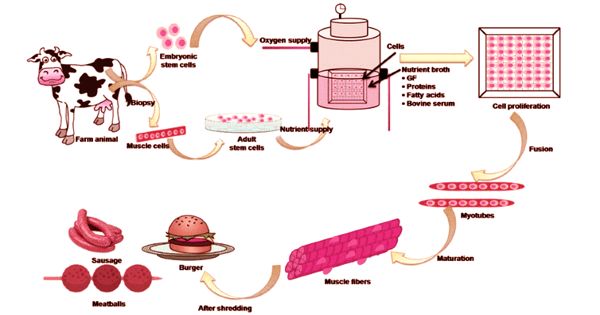As low Earth orbit becomes increasingly crowded, it will become more necessary to use middle Earth orbits, and radiation-tolerant cell designs will be required. Thinner photovoltaics should last longer because charge carriers have less distance to travel during their shortened lifetimes. A radiation-tolerant photovoltaic cell design with an ultrathin layer of light-absorbing material is proposed by scientists. When compared to thicker cells, ultra-thin cells require nearly 3.5 times less cover glass to deliver the same amount of power after 20 years of operation.
Photovoltaic cells, which convert sunlight to electricity, power the majority of space satellites. Exposure to certain types of radiation in orbit can harm the devices, reducing their performance and limiting their lifetime.
AIP Publishing’s Journal of Applied Physics featured a radiation-tolerant photovoltaic cell design with an ultrathin layer of light-absorbing material proposed by scientists from the University of Cambridge.
For proton radiation above a certain threshold, our ultra-thin solar cell outperforms previously studied, thicker devices. In comparison to previous observations, the ultra-thin geometries provide two orders of magnitude better performance.
Armin Barthel
When solar cells absorb light, they convert it into energy by transferring it to negatively charged electrons in the material. These charge carriers are knocked free, causing an electric current to flow across the photovoltaic. Space radiation damages and reduces efficiency by displacing atoms in the solar cell material and shortening the lifetime of the charge carriers. Thinner photovoltaics should last longer because charge carriers have less distance to travel during their shortened lifetimes.
As low Earth orbit becomes more cluttered with satellites, it becomes increasingly necessary to use middle Earth orbits, such as the Molniya orbit that passes through the center of Earth’s proton radiation belt. Radiation-tolerant cell designs will be needed for these higher orbits.
Another application for radiation-tolerant cells is the study of other planets and moons. For example, Europa, a moon of Jupiter, has one of the most severe radiation environments in the solar system. Landing a solar-powered spacecraft on Europa will require radiation-tolerant devices.

The researchers created two types of photovoltaic devices out of the semiconductor gallium arsenide. One was an on-chip design created by layering several substances in a stack. The other design included a silver back mirror to improve light absorption.
To simulate the effects of radiation in space, the devices were bombarded with protons generated at the Dalton Cumbrian Nuclear Facility in the United Kingdom. The performance of photovoltaic devices before and after irradiation was investigated using a technique known as cathodoluminescence, which can provide a measure of radiation damage. A second set of tests was performed using a Compact Solar Simulator to determine how well the devices converted sunlight to power after being bombarded with protons.
“For proton radiation above a certain threshold, our ultra-thin solar cell outperforms previously studied, thicker devices. In comparison to previous observations, the ultra-thin geometries provide two orders of magnitude better performance” Armin Barthel, the author, stated
According to the authors, the improved performance of these ultra-thin cells is due to charge carriers that live long enough to travel between terminals in the device. When compared to thicker cells, ultra-thin cells require nearly 3.5 times less cover glass to deliver the same amount of power after 20 years of operation. This will result in a lighter load and significantly lower launch costs.
















